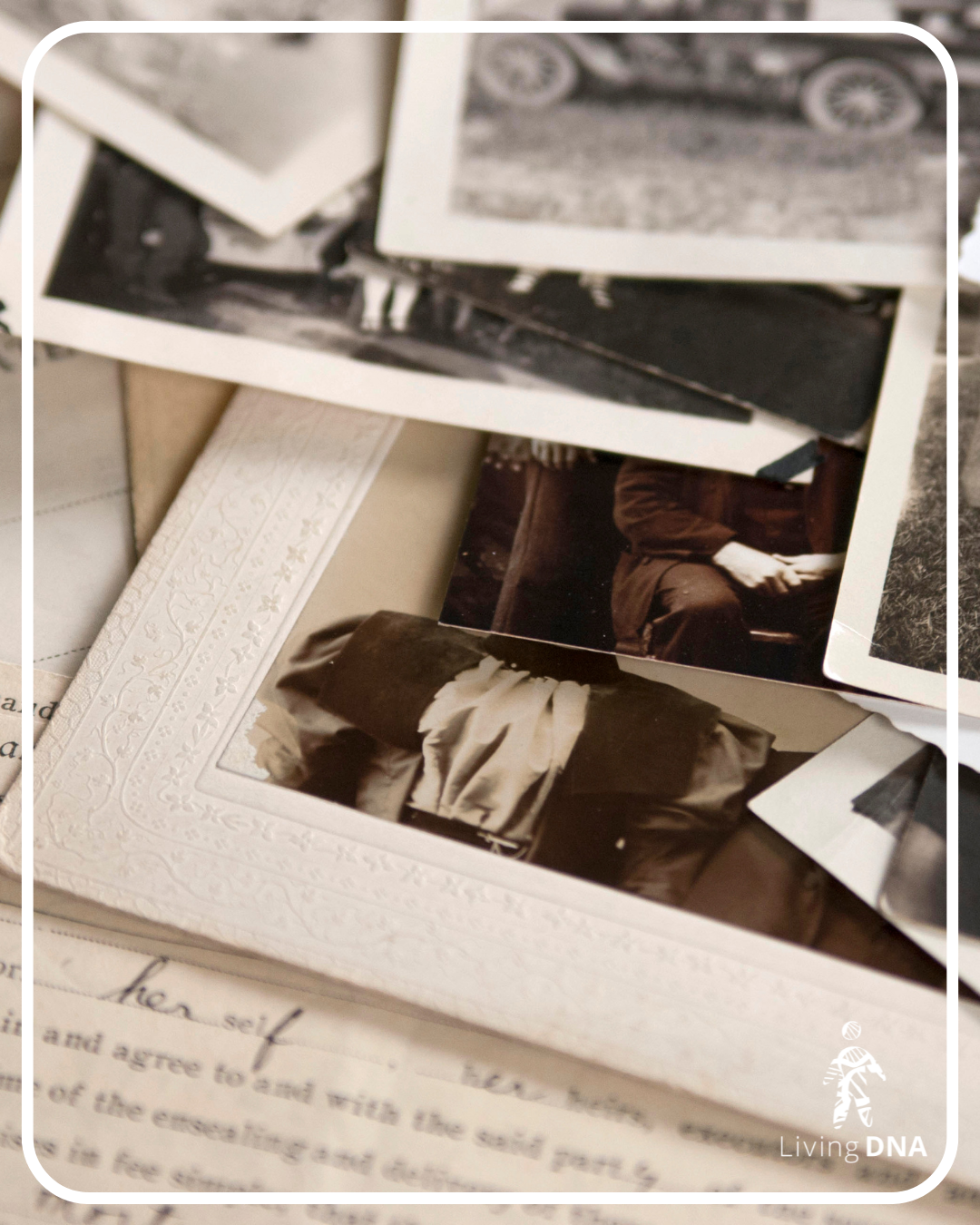Family History Month: Recording Family Stories
The year is drawing to a close, and we’re moving into a season filled with family gatherings for holidays and celebrations, so what better time to capture stories from your loved ones, and preserve them for future generations? From thrilling tales capturing historical moments through the eyes of someone close to you, through to intimate and very personal moments, memories are priceless treasures which can connect us to our ancestors.

Stories have always been important to humans, from oral histories passed down through generations to pass on knowledge or morals, to the modern inventions of the novel, films, and television. Stories are one of the things that make humans so unique, connecting you to the people and places throughout history that have shaped you into the person you are today.
There’s a storyteller in almost every family. Perhaps in your’s there’s a great-grandparent who remembers the feel of their ration book in their hand during WWII, the terror of hiding in tube stations during air raids, the relief when peace was finally declared. Maybe it’s an aunt who emigrated to a different country to begin her whole life over from scratch in her thirties, and is now thriving & living her best life abroad in her fifties. Or it could be your Dad who has the gift of the gab, and can take everyday stories about your childhood, embellish or exaggerate in just the right way, until you’re crying with laughter with your siblings at the dining table.

It’s one thing to read about history in a book, or on a website. It’s quite another to see or hear a relative talk about their life. Seeing their expressions and hearing their familiar voice can make all the difference to keeping a story alive for the next generations. You could even find new links between old family stories and big historical events that you’d never thought about before.
It’s an uncomfortable thought, but the ones we love won’t always be there to retell their stories, which makes preserving them for future generations to enjoy all the more important.
Read on for Living DNA’s top tips for recording your relatives and their stories.
Prepare in advance, and get cosy.

Making a plan in advance might be difficult at first, but how you approach your relatives will end up being just as important to the conversation as the questions you ask. Spontaneity can feel more natural and certainly has its place while you’re chatting, but a solid plan at the outset will give you a strong foundation to build on.
Once you have a plan for the session, let your relative know generally what you’d like to ask them about, because a surprise may not always be welcome, so while you don’t necessarily need to give them the full list of questions you have planned, make sure you’ve given them a heads up about the points or stories you’d like to cover. And remember to get permission ahead of time for any recording you’d like to do! Not everyone is comfortable being recorded, so make sure you’ve got plenty of paper and pens to hand in case someone says they’d prefer you to take notes.

Choose a relaxed setting to help your relative relax. Maybe a familiar living room, a kitchen table with a pot of tea, or even having your conversation over a shared meal. A warm-up chat full of laughter and shared memories helps to make the moment feel more natural. If your relative feels nervous, it’s fine to acknowledge it, recording a conversation can feel awkward or unusual at first. Sometimes, having another family member sit in can make it feel more like a friendly chat than a formal interview. And for those who live too far away to visit, an online call can make it easy to connect.
Whatever format you choose, be clear about how you’ll use what you record. Let your relatives know whether their stories will be shared within the family, added to a family tree project, or kept as private keepsakes. Being transparent builds trust and often leads to more open conversations.
Planning Your Questions

Having a few questions prepared can help keep the conversation flowing, but try not to treat them as a strict script. Let the discussion move naturally and follow where the memories lead. Photographs, maps, or old letters can help spark recollections, while home videos might remind you of moments worth revisiting.
Be prepared for emotions to arise. Some of the most meaningful memories come from personal or difficult experiences. Always tread carefully and respect your relative’s boundaries. If a story seems to differ from what you’ve heard elsewhere, it’s usually best not to challenge it directly. Family legends and secrets often carry deep significance, and a gentle approach helps keep communication open.
After the Conversation
Once you’ve finished recording, follow up where you can. Other relatives may remember the same story differently or have more to add. If your first conversation sparks new questions, arrange a follow-up chat. A heartfelt thank-you note or a small gift to show your appreciation can mean a great deal to someone who’s shared their memories.

When it’s time to write everything up, transcribe your notes or recordings and store them safely with your other family history materials. Digital transcribers can help, but they don’t always handle accents or overlapping voices well, so checking your work is important. These written records can become a cornerstone of your family’s shared legacy.
Remember the "Why?"

Recording family stories helps bring everyone a little closer. In the middle of the usual end-of-year rush, taking time to sit together and share memories can turn an ordinary afternoon into something special. The laughter, the long-forgotten details, the way someone’s eyes light up when they start a favourite story, all of it adds up to something you’ll want to hold on to. Family history lives in those moments, not just in old photos or records. A few minutes spent listening now can become a gift that’s passed forward, carrying your family’s voice into the future.
